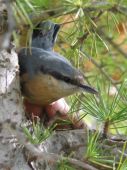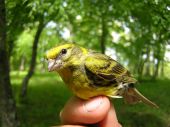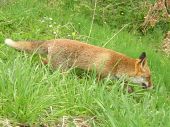The animals of Gallipoli Cognato Piccole Dolomiti Lucane Regional Park are obviously less easy to observe than the vegetation due to their elusiveness. However, this does not exclude the occasional visitor from making surprising encounters by placing a little attention during a walk or a guided tour. The Park, being an ecosystem of considerable resources, is home to numerous species of mammals, birds, reptiles and sometimes very rare insects.
Database of the fauna of the Park
To find out about the species so far listed by the Park, the fauna database is available
Among the mammals are the wild boar, the wolf, the fox, the badger, the porcupine, the wild cat, the hare, the hedgehog, dormice and squirrels, weasels and martens and, in the water courses, the otter. The fallow deer has been reintroduced by man in the central area of the Park.
The birds are a real resource: the most authoritative birdwatching magazines report the Park. Through binoculars, it is easy to observe among the great birds of prey the splendid specimens of kite, the buzzard, the kestrels and the peregrine falcon. At night, the barn owl, the tawny owl and the owl meet easily.
Currently the Park hosts a remarkable colony of Black Stork on which it has developed a dedicated monitoring project.
In the woods, one can meet the green woodpecker, the nuthatch, the jay, the hoopoe and the golden oriole. In the clearings, near the pastures, there are robins, long-tailed tits, blackcaps, larks and nightingales.
Amphibians are naturally numerous near the many waterways of the Park. There are the green frog, the Greek frog, the emerald toad and the yellow-bellied toad. More difficult to observe for the reserved and secluded habits, the spotted salamander and the spectacled salamander, two very rare species.
In spring, the courtship dances of the tritons are observed. Among the snakes, there are the grass snake with its typical black colour and the cervone, both harmless to humans. Very rare is the Herman tortoise, a small tortoise with a shell with yellow spots that lives near the clearings and the Mediterranean scrub.

















 Il presente sito si ispira alle nuove linee guida di design per i servizi web delle PA
Il presente sito si ispira alle nuove linee guida di design per i servizi web delle PA